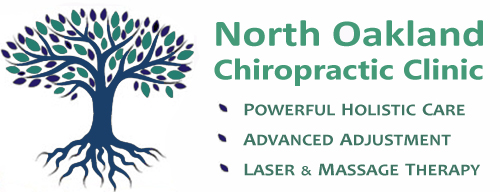5212 Claremont Avenue
Oakland, CA 94618• Mon. • Wed. • Fri. • 10am-6:30pm (by appt.) •
• Tues. 12pm-8pm & Thurs. 9am-4pm (by appt.) •Neck Pain
There are a number of sources of neck pain…

Primal Pictures Ltd.
The displacement, or subluxation, of the vertebrae is a major cause of neck dysfunction and discomfort. The word luxation means a dislocation of two joining bones. If a luxation happens anywhere in the spine, ligaments, neurological structures, and nerve roots tear; this is a catastrophic if not fatal injury. Subluxation is a less severe luxation. Neurologically the spine contains a densely populated set of nerve endings in the ligaments that hold the vertebrae together. This spinal apparatus is more highly evolved in humans than in any other animal, which is why we have ease in our upright bipedal posture and why we have the fine motor control able to make music and erect buildings. Our evolutionary accomplishments are all based on the number of nerve endings in our tissues; there is more communication apparatus in our tissues than any animal in the Kingdom. But it is also the reason that any discomfort in the spinal area is more keenly felt.
All the structures of the spine, ligaments, discs, muscles feed back positional sensations to the central nervous system. This neurological apparatus detects altered positions as well as normal sensory information. A subluxated positional sensation causes a reflex guarding pattern to emanate through the motor neurons; the muscles clamp down in order to hold everything together and prevent further dislocation. (See the section on pain.) This guarding pattern is basically a spinal cord reflex and it is an appropriate defensive mechanism.
If we were to view subluxation the way the central nervous system reads it, which is as an impending luxation, we would see a warning go off in the control room — Red Alert!
This warning, as in subluxation of the cervical spine, creates an impending survival challenge and the nervous system will respond by locking down these muscles, restricting the range of motion of the neck, and making certain positions uncomfortable to painful.
How does this happen? Any time the head is instantaneously forced to a different direction and decelerates or accelerates from the shoulders, the cervical spine can be challenged in its integrity. This is called whiplash. The neck is a connecting column between the thorax, chest, and the head. If that connecting column is forcibly changed in momentum, speed, and direction, like in car accidents or other rapid deceleration events, the cervical spine will buckle and the joints will fail.
Every year car accidents cause 45,000 deaths and more than 500,000 totally debilitating/institutionalizing injuries.
In addition 6 million plus accidents a year cause disabilities that lead to chronic problems, such as neck pain, headaches, and, degenerative osteoarthritis that will impair the spinal cord decades after the date of injury. Osteoarthritis or degenerative arthritis is the biggest source of disability in this country, causing a major depletion in Medicare funds. Many of these conditions were initiated by car accidents years earlier, causing a lifelong process of degeneration that interferes with a person’s quality of life and functional capacity. Private insurers have a duty to support their clients so that the process of degeneration can be monitored and mitigated.
A second source of neck pain, also associated with subluxated vertebra, is injury to the joints of the upper rib cage.
 This type of injury causes a guarding mechanism of the large flexors, extensors and rotators of the cervical spine and head, including the sternocleidomastoideus muscle, the scalene muscles, and levator scapulae and trapezius. These are all muscles that traverse the region from the upper thoracic, and shoulder area to the cervical spine and head.
This type of injury causes a guarding mechanism of the large flexors, extensors and rotators of the cervical spine and head, including the sternocleidomastoideus muscle, the scalene muscles, and levator scapulae and trapezius. These are all muscles that traverse the region from the upper thoracic, and shoulder area to the cervical spine and head.
In order to protect vital structures, these muscles will become rigid. The result is poor circulation in the tissues and this is felt as burning pain. There will be loss of range of motion, with the movements and positions becoming painful. When people are asked to locate their neck pain, most will indicate the lateral (side) aspects of their necks, which points to an involvement of the scalenes muscles. If the scalenes are involved, almost invariably the ribs are subluxated. Common displacement patterns are posterior and lateral, which has to do with outstretched hands, seat belts, and backpacks, pulling the ribs posteriorly away from the sternal joints. The way we fall, the way gravity interacts with our bodies, pushes the ribs in that direction as the impact is felt. These are the common causes of displacement — all bets are off when a person is thrown from a bike or a jet ski, flying through the air like a rag doll.
When the scalene muscles become rigid, they trap the neurological structures that extend to the arm, hand and fingers.

Primal Pictures Ltd.
